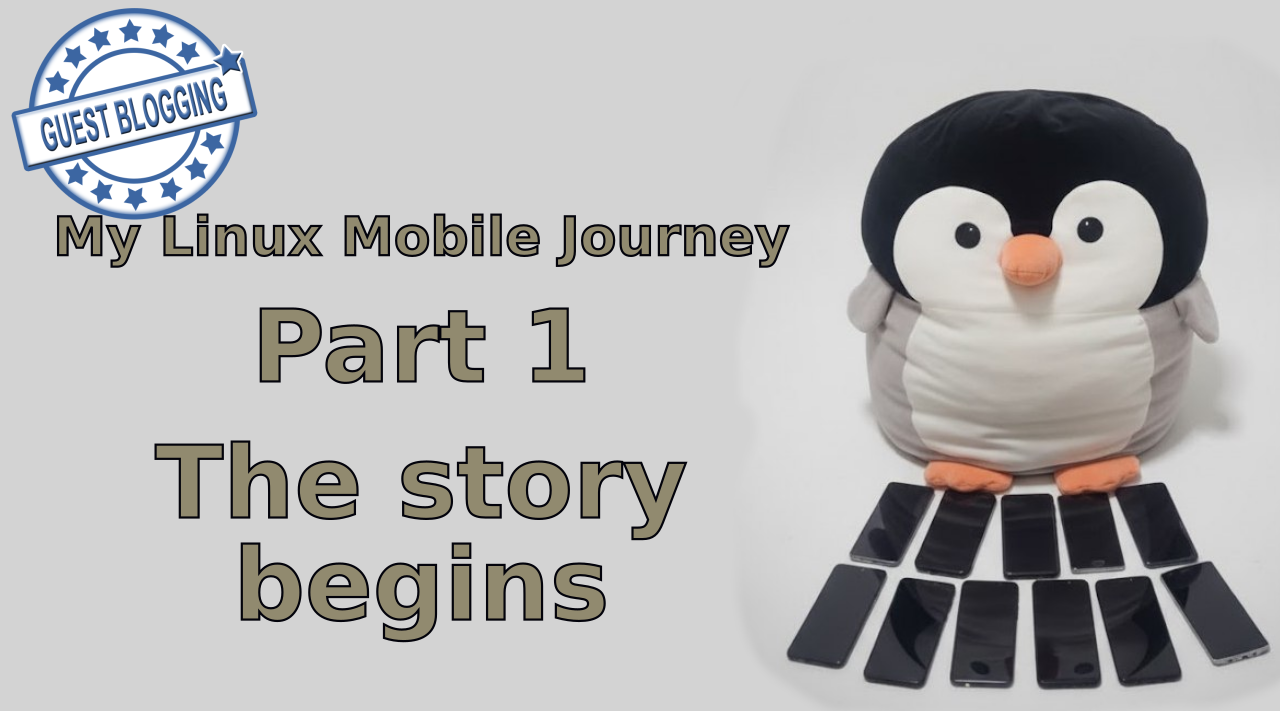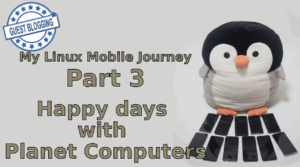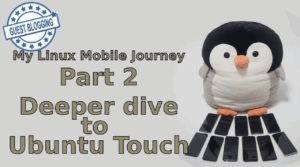My Linux Mobile Journey – Part 1

Hello all linux mobile folks! I am alaraajavamma, from the country where Linux was invented. You might have seen me in Purism, Librem 5, Pine64, Pinephone, UBports, Ubuntu Touch or similar chats, forums and ecosystems. Wayne from Furilabs asked me to write a blog series of “my linux mobile journey” so here we are.
I do not work for or receive any compensation from Furilabs. I am just a satisfied customer and Linux phone enthusiast who desperately wants to see linux mobile succeed.
This is the first chapter and my plan is something like this:
1. My linux mobile journey
2. Deeper dive to Ubuntu Touch
3. Happy days with Planet Computers
4. Into the wild with Librem 5
5. Community effort and glory days with Pinephone
6. The new king has arrived. Please welcome Pinephone Pro
7. They said you can’t teach old phones new tricks until postmarketOS arrived
8. “Honey, I’m home”
I will link the new posts to the list when they are ready. I hope you enjoy the story.
My linux mobile journey started in 2010
My Linux mobile journey started in 2010. Back then, the phone market wasn’t the walled garden it is today. There was real diversity—different operating systems, different ideas. I still fondly recall my Nokia N900, a pocket-sized Linux computer running Maemo. It felt years ahead of its time.
In that more open landscape, running Linux on a phone wasn’t a bold ideological statement. It was simply part of the hacker ethos – a joyful exploration of the possible, guided by the question: “Why not?” Today, things feel very different. Using a Linux phone is no longer just a hobby. It’s a conscious choice to avoid being locked inside a digital prison.
Era of possibilities and the dream of linux mobile
It was during that era of possibility, in the summer of 2010. My friend showed me a YouTube video that would shape my passion for mobile tech for the next decade: Mozilla’s “Seabird,” a concept phone that could also serve as a full desktop computer. The idea struck me deeply. The thought of carrying a powerful PC in my pocket, ready to project a desktop anywhere, became my ultimate dream.
A few years later, in 2013, that dream felt closer than ever. Ubuntu announced the Edge and launched its ambitious crowdfunding campaign. I backed it immediately. It went on to become the most successful campaign of its time, yet heartbreakingly still fell short of its goal. Ubuntu never built The Edge, but its enthusiastic following proved that the hunger for a truly convergent device was both real and widespread.
Actual hardware in hand
The vision didn’t die, though. Ubuntu partnered with manufacturers, and in 2016 I finally got my hands on a piece of that future. The Meizu Pro 5 Ubuntu Edition. It was a stunning flagship, and the OS felt fluid and futuristic. It was a huge step forward, but there were still rough edges. The lack of a simple wired display-out limited the desktop experience, and the software ecosystem was understandably constrained in the name of a better mobile experience. I believed in the direction of linux mobile, but something still felt missing.
First wired display out experiences
My journey continued with the Nexus 5. This device was exciting because the community had managed a kind of hacked-together wired display-out. It offered a tantalizing glimpse of what was possible, though being unofficial, it wasn’t polished enough for daily use. Still, Ubuntu Touch ran beautifully on it. After the Nexus, my commitment only deepened as I cycled through a series of phones: the OnePlus One, the 3, the 3T, and more recently the Volla Phone and Volla Phone X. Looking back, I see how each device shaped my Linux smartphone journey.
Conclusion and respect for Ubuntu Touch
This long path gave me a real appreciation for the technical choices that make Ubuntu Touch so practical. Its foundation is Halium, a compatibility layer that cleverly reuses Android drivers so hardware “just works.” This is paired with a protected, read-only root filesystem for stability and the Click packaging format for secure, streamlined app installation. Together, these choices create a remarkably stable and reliable mobile OS.
And yet, even as I admired those design decisions—Halium, the protected rootfs, the Click packaging system – I still felt a pull toward something different. I wanted a phone that behaved more like a true desktop-style Linux system, one that was even more open, and ideally, fully free.
Linux mobile story continues – time to move on
In the end, I realized that Ubuntu Touch, as brilliant as it was, wasn’t quite home for me. So when two companies began crowdfunding Linux mobile phones that ran the very same Linux I used on my desktop, I knew it was time to turn the page. My journey was ready for chapter two.
If you don’t want to follow my route and burn your money to test everything what is available you can also choose to pre-order the FLX1s and support most polished and complete linux smartphone today.
Add comment
You must be logged in to post a comment.





3 comments
wayne
I can’t wait to read about the entire journey! Also – all the phones in the pic are his Linux phones! What a collection!
Luigi311
Wow thats a lot of linux phones! I better go tell my gf that shes lucky i don’t have as many as that
alaraajavammaAuthor
Hah xD. And I have re-sold much more linux phones what I actually still own.